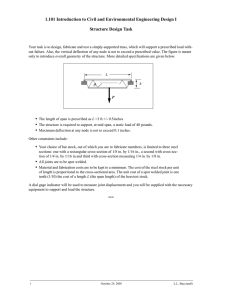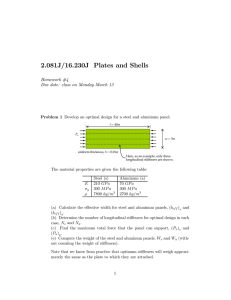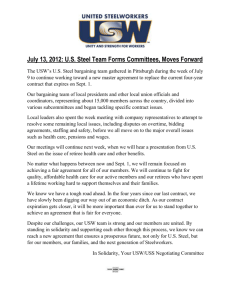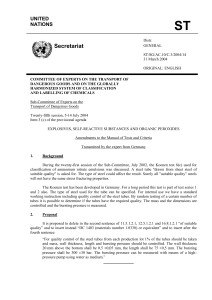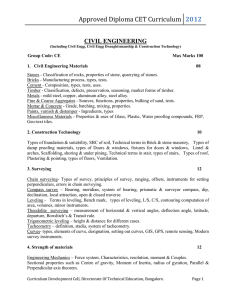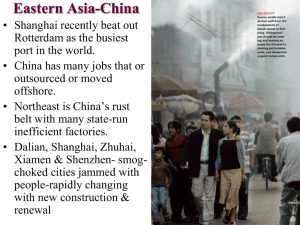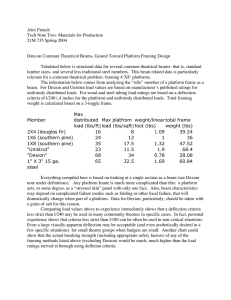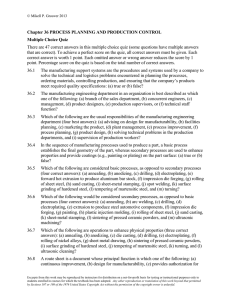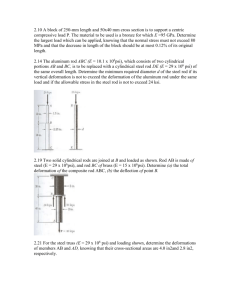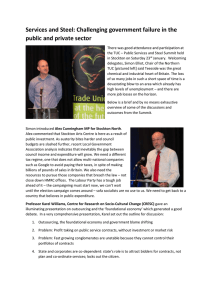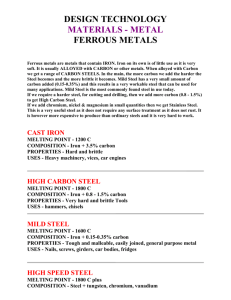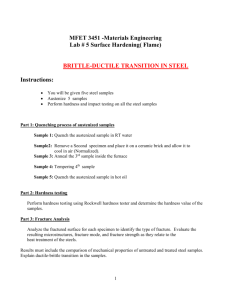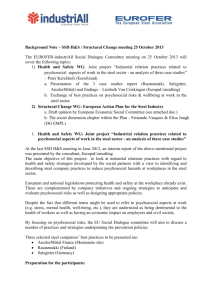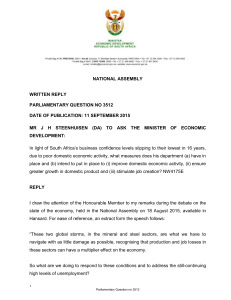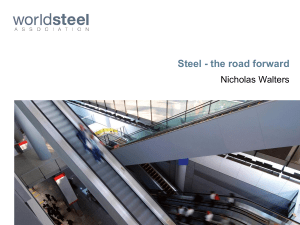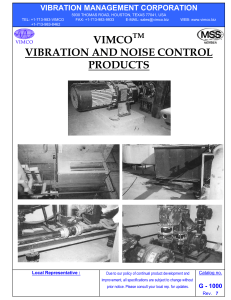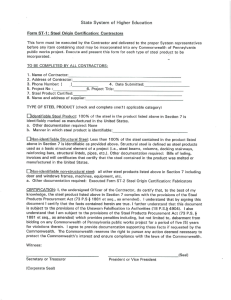The figure illustrates a stepped torsion
advertisement
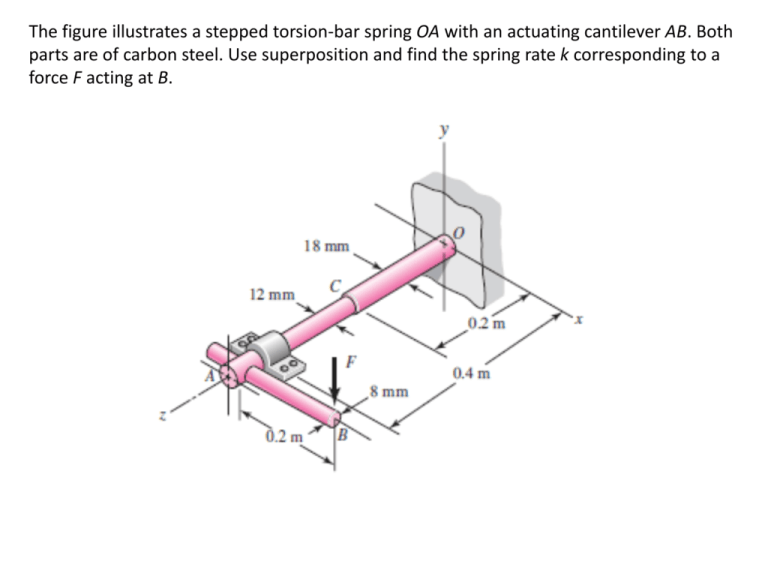
The figure illustrates a stepped torsion-bar spring OA with an actuating cantilever AB. Both parts are of carbon steel. Use superposition and find the spring rate k corresponding to a force F acting at B. The steel curved bar shown has a rectangular cross section with a radial height h = 6 mm, and a thickness b = 4 mm. The radius of the centroidal axis is R = 40 mm. A force P = 10 N is applied as shown. Find the vertical deflection at B. Use Castigliano’s method for a curved flexural member, and since R/h < 10, do not neglect any of the terms. For the steel wire form shown, use Castigliano’s method to determine the horizontal reaction forces at A and B and the deflection at C. A rectangular aluminum bar 10 mm thick and 60 mm wide is welded to fixed supports at the ends, and the bar supports a load W = 4 kN, acting through a pin as shown. Find the reactions at the supports and the deflection of point A. The steel beam ABCD shown is supported at C as shown and supported at B and D by shoulder steel bolts, each having a diameter of 8 mm. The lengths of BE and DF are 50 mm and 65 mm, respectively. The beam has a second area moment of 21(103) mm4. Prior to loading, the members are stress-free. A force of 2 kN is then applied at point A. Using procedure 2 of Sec. 4–10, determine the stresses in the bolts and the deflections of points A, B, and D. Link 2, shown in the figure, is 25 mm wide, has 12-mm-diameter bearings at the ends, and is cut from low-carbon steel bar stock having a minimum yield strength of 165 MPa. The end-condition constants are C = 1 and C = 1.2 for buckling in and out of the plane of the drawing, respectively. (a) Using a design factor nd = 4, find a suitable thickness for the link. (b) Are the bearing stresses at O and B of any significance?





